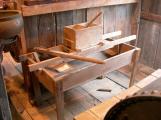14
Calipers
1900?
Oxford County, Ontario, Canada

15
5. Milk was then placed in the large curd vat.
6. Constant Stirring kept the cream from rising to the surface.
7. Milk was steam heated to 86 degrees Fahrenheit. This was not hot enough to pasteurize the milk but simply aided in the fermentation of the milk.
8. Rennet, an enzyme from a calf's stomach, is added to the vat to cause the milk to coagulate. Colouring would be added at this stage to give the cheese its orange colour. Originally this colouring agent would have been Annatto paste, a derivative of the achiote trees of tropical regions of the Americas.
16
A large curd vat
1945?
Ingersoll, Ontario, Canada
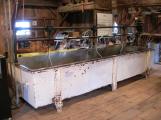
17
Agitator Paddles in a Curd Vat
1945?
Ingersoll, Ontario, Canada
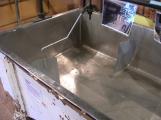
18
Cheese making at the Blanchard-Nissouri Cheese Factory - Part 2
1989
Ingersoll, Ontario, Canada

19
9. Curds were cut with various curd knives
20
Curd Knife
1880?
Oxford County, Ontario, Canada

21
Curd Knife
1880?
Oxford County, Ontario, Canada
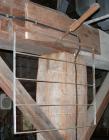
22
10. Curd Rakes were used to stir the curd until cooked.
23
McPherson Rake
1880
Oxford County, Ontario, Canada

24
11. Curds placed on a curd drain board allowing the whey to drain into a curd sink.
25
A Salt Board
1880?
Ingersoll, Ontario, Canada
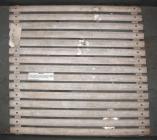
26
12. The cooked curd blocks were placed in a curd mill to be finely cut (this was especially the case when they were making cheddar cheese).
27
A Curd Mill sitting on a Curd Sink.
1880?
Oxford County, Ontario, Canada
